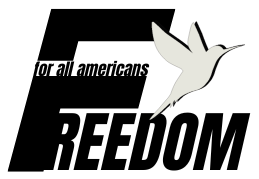Free speech sits at the core of democratic life. People expect to voice opinions, criticize leaders, and argue ideas without fearing arrest or censorship. Yet no democracy treats speech as limitless.
Courts, parliaments, and regulators set boundaries to protect safety, reputation, national security, elections, and the well-being of children.
Those limits evolve with technology and politics, so what felt acceptable even a decade ago may now be regulated.
Today, we will take a look at how democracies draw the line, how the rules are enforced, and what citizens, journalists, and platforms can do to respect both liberty and safety.
Table of Contents
ToggleA Quick Look At Key Limits
| Area | US Standard | UK/Europe Standard |
| Incitement | Intent + imminence (Brandenburg) | Direct calls to violence, strict proportionality |
| Hate speech | Limited bans, high First Amendment bar | Criminal/civil bans allowed if tightly defined |
| Defamation | Actual malice for public figures | Serious harm threshold + public interest defenses |
| Obscenity/Minors Online | Expanding age verification laws | Online Safety Act fines + Ofcom codes |
| Protest | Time, place, and manner restrictions | Public Order Act 2023 + judicial pushback |
| Platform liability | Section 230 + editorial freedom | Delfi liability + Digital Services Act |
How Modern Democracies Define the Baseline

Free expression in democratic countries starts from a shared foundation rather than a blank slate.
Before any limits can be drawn, lawmakers and courts rely on international principles that spell out when restrictions are legitimate and how far they can go.
The Three-Part Test from Article 19
Most democracies borrow from international human rights law when deciding where expression ends and regulation begins.
Article 19 of the International Covenant on Civil and Political Rights (ICCPR) and General Comment No. 34 from the UN Human Rights Committee offer a simple three-part test:
- Provided by law: Restrictions must be set out in accessible statutes or regulations, not informal decrees.
- Legitimate aim: They must protect interests like public order, national security, or the rights of others.
- Necessary and proportionate: They cannot be broader than required to achieve the stated goal.
This formula helps courts filter out vague or politically motivated limits.
Europe’s Article 10 Tradition
In Europe, Article 10 of the European Convention on Human Rights (ECHR) echoes the ICCPR. It protects expression but allows restrictions prescribed by law, pursuing legitimate aims, and necessary in a democratic society.
The landmark Handyside case established that even offensive or shocking speech receives protection, but governments still retain a “margin of appreciation” to set moral standards, especially around protecting minors.
Where Democracies Draw the Line

Every democracy promises broad freedom of expression, yet all of them set limits when speech crosses into real harm.
Let’s take a look at the main areas where governments step in and how courts decide when a restriction is justified.
1. Incitement and Imminent Violence
Words can turn volatile when they call for immediate harm. Courts in modern democracies draw a sharp line between heated rhetoric and speech that’s intended and likely to spark real-world violence, setting strict thresholds before criminal penalties apply.
United States
Speech loses protection only when it’s intended and likely to produce imminent lawless action. This is the Brandenburg standard, a high bar that shields even inflammatory speech unless it’s a true threat or a direct incitement to violence.
In 2023, the Supreme Court clarified that recklessness about whether words are threatening can be enough for criminal liability.
Europe
The European Court of Human Rights (ECtHR) allows penalties for direct calls to violence and for aiding serious crimes but requires strict proportionality.
Public advocacy of terrorism, for example, can be punished, but governments must show a concrete risk of harm.
2. Hate Speech
Hate speech laws show how democracies try to protect public safety and dignity without erasing open debate.
Around the world, courts weigh context, intent, and harm to decide when offensive words become punishable conduct.
Canada
The Supreme Court in R v. Keegstra upheld criminal hate speech provisions, calling them justified limits under the Charter.
In Whatcott, it allowed civil hate speech rules when tightly defined but struck overly broad parts. This shows courts trying to draw narrow lines around hateful expression.
Europe
Context matters. In Jersild v. Denmark, the ECtHR ruled it was a violation to punish a journalist who aired racist statements in a critical news program.
The Court emphasized the program’s framing and public interest in exposing extremist groups.
United Kingdom
“Insulting” words alone are no longer a public order offense under Section 5.
Threatening or abusive words likely to cause harassment or distress can still be prosecuted under the Public Order Act, guided by CPS policy.
3. Defamation and Reputation

Speech can be powerful, but it can also wound reputations if handled carelessly.
Under defamation laws, democracies work to strike a fair balance between free expression and protecting people from false or damaging claims.
United States
Public officials and public figures must show “actual malice” to win a defamation claim.
This stems from New York Times v. Sullivan, which the Supreme Court declined to revisit in 2025, keeping the strong protection intact.
United Kingdom
The Defamation Act 2013 introduced a “serious harm” threshold, including a serious financial loss requirement for companies.
Courts continue to refine what qualifies as “serious harm” and how it’s proven.
Australia
States and territories adopted Model Defamation Provisions, adding a serious harm element and modernizing defenses, balancing speech with reputation.
4. Obscenity and Protection of Minors Online
Protecting children online has become one of the strongest drivers for new speech rules.
Legislators and courts are tightening age checks on adult sites and social apps, arguing that the potential harm to minors outweighs some limits on adult access.
United States
Age-verification laws for adult sites and social apps are expanding.
The Supreme Court allowed Texas’s age-verification law to stand in Free Speech Coalition v. Paxton and let a Mississippi social media age-gating law take effect during litigation.
Courts are showing more tolerance for child-protection rules even when they burden adult access.
United Kingdom
The Online Safety Act gives Ofcom power to fine services up to 10 percent of global turnover for illegal content breaches. Codes on illegal harms are now enforceable.
5. Public Order and Protest
View this post on Instagram
Public protest remains a vital part of democratic life, but governments also have a duty to keep public spaces safe and orderly.
Laws around demonstrations, marches, and sit-ins aim to strike that balance by setting rules on when, where, and how protests can take place without tipping into intimidation or disruption.
United Kingdom
Courts have struck down ministerial attempts to lower thresholds for police intervention without proper authority.
Parliament passed the Public Order Act 2023, refining police powers around protests that risk intimidation or serious disruption, especially near places of worship.
United States
Content-neutral time, place, and manner rules are allowed if narrowly tailored and leaving alternative channels open. Ward v. Rock Against Racism remains the reference point.
6. Platform Liability and the Private Square
Online platforms have become the new public squares, but their legal shields and duties vary sharply across democracies.
Before getting into the key rules, it helps to see how governments, courts, and regulators frame the question of who is responsible for harmful content posted by users.
United States
Section 230 still shields platforms from most third-party content liability and from lawsuits over good-faith moderation.
In 2024, the Supreme Court vacated and remanded challenges to Texas and Florida laws that tried to control moderation rules, signaling that lower courts must apply full First Amendment analysis and treat curation as speech.
Europe
In Delfi v. Estonia, the ECtHR allowed liability for a news portal that failed to remove clearly unlawful reader comments promptly.
This contrasts with the EU’s Digital Services Act (DSA), which imposes detailed risk and transparency duties but also codifies notice-and-action procedures.
United Kingdom
The Online Safety Act obliges platforms to assess risks, build reporting tools, and act on illegal material while considering users’ expression rights.
Ofcom is issuing guidance and illegal-content codes to standardize compliance.
New Pressure Points in 2024 and 2025

Laws and court decisions haven’t stood still. In 2024 and 2025, a new set of pressure points has emerged, testing how far governments, courts, and platforms can go in the name of safety, fairness, and accountability.
Child Safety vs. Adult Access Online
Governments are adopting age checks for adult content and social media. The US Supreme Court has signaled more tolerance for such laws, though privacy and data retention concerns are mounting.
Expect more legal challenges and more technical debates over how to verify age without compromising privacy.
Illegal Harms Regimes and Mega-Platforms
The UK’s Online Safety Act moved from paper to enforcement in 2025. Ofcom now demands risk assessments, transparency, and specific safety systems, backed by massive fines. Civil society is watching whether these duties cause the over-removal of lawful speech.
Moderation as a Speech Act
US cases over Texas and Florida laws show courts increasingly view large platforms’ curation, ranking, and removal as expressive decisions that deserve First Amendment protection.
Litigation continues, but the direction is clear: moderation itself counts as speech.
Disinformation, Research, and Government Contacts
In Murthy v. Missouri, the Court allowed federal officials to contact platforms about misinformation mainly on standing grounds, rejecting broad claims of censorship.
Researchers warn the chilling effect on cooperation remains a live issue.
Press Freedom Headwinds
Reporters Without Borders notes worsening economic pressures on media and falling index scores even in self-described democracies. That environment influences how courts weigh speech against other interests.
How Democracies Try to Get the Balance Right

Democracies constantly adjust their legal and cultural guardrails to keep speech open while preventing real harm.
Underneath the debates and headlines, there’s a shared toolkit of principles and safeguards designed to keep that balance steady and transparent.
Common Ingredients of Lawful Limits
- Clear legal rules: Restrictions spelled out in laws or regulations, not secret directives.
- Legitimate aims: Protecting others’ rights or reputations, national security, public order, public health, or morals.
- Necessity and proportionality: No broader than needed and with safeguards like appeals and judicial review.
Procedural Safeguards You Can Look For
- Independent oversight: Courts or regulators overseeing protest conditions, takedown orders, or defamation suits.
- Appeals and complaints: Routes for users and publishers on platforms or before regulators like Ofcom.
- Transparency and accountability: Public reporting of government demands to remove content and platforms’ moderation actions.
Practical Guidance for People, Publishers, and Platforms

Everyday Speakers and Creators
- Stick to verifiable facts when naming people. In the US, public figures must prove actual malice, but fabrication and reckless disregard are still risky. In the UK, ask whether a statement causes “serious harm” and back it up with evidence or fair comment signals.
- Avoid threats and targeted harassment. True threats are unprotected in the US, and abusive conduct can trigger UK public order laws.
- Contextualize sensitive content. Journalism and documentary work that critically frames extremist speech is looked at more generously.
- Age-sensitive materials need extra care online. Expect more age gates and verification prompts, especially in the US and UK.
Civil Society and Newsrooms
- Defamation readiness: Keep notes and source records. UK outlets should document public interest and check the serious harm threshold early. Australian outlets should track model defamation reforms across states.
- Protest coverage: Know local thresholds for police conditions and the current status of any court rulings affecting those powers.
Platforms and Community Moderators
- Write rules in plain language and apply them consistently. Courts in Europe have accepted liability where services failed to act on clearly unlawful comments. The DSA and UK Online Safety Act demand risk assessment, notice-and-action workflows, and transparency reports.
- Build adult-access and child-safety lanes. Age assurance is spreading. Prepare for privacy-preserving verification and clear complaint and appeals channels.
- Remember your own speech rights in the US. Curation and ranking are editorial choices that likely get First Amendment protection, though litigation continues. Section 230 remains a key shield, separate from constitutional defenses.
Evolving Lines You Should Watch
- Child-safety statutes pushing age verification for adult sites and social media, with privacy battles over ID checks.
- Protest laws redefining “serious disruption” and related police powers, with courts scrutinizing ministerial overreach.
- Platform governance under the EU DSA and the UK Online Safety Act, including risk audits, systemic risk duties, and steep fines.
- Defamation reforms tightening thresholds or modernizing defenses to address digital distribution while guarding robust debate.
The Bottom Line

Modern democracies protect a wide range of expression but draw clear lines around incitement, true threats, harassment, serious defamation, and harm to children.
They also allow time, place, and manner rules for protests and demand that restrictions be legal, legitimate in aim, and proportionate.
Digital life raises fresh questions about platform power, government contracts, algorithmic amplification, and responsibility for user content.
The best compass is still the old triptych: clarity in law, legitimate goals, and necessity with safeguards. When those three show up together, limits tend to stand. When they don’t, courts increasingly push back.
Related Posts:
- Safest Countries in the World in 2025 - GPI…
- 26 Most Dangerous Cities in US - Updated Statistics for 2025
- Capital Cities in Europe: Top Destinations For You…
- Civil Liberties in a Constitutional System
- What Is the Most Dangerous Country in the World in 2025
- America's Murder Capitals: A 2025 Ranking of the…








